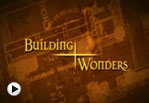The New Cut
Prince St Bridge to Cumberland Basin
View large map image | View before and after photos | View the complete trail as a PDF
From the south side of Prince Street Bridge, continue south on the right hand-side of Wapping Road. At the mini-roundabout, turn right.
34. The curved section of stone wall on the corner and the gateway a little further along Cumberland Road are the last remains of Bristol’s New Gaol. Built in 1816, it suffered considerable damage during the Bristol Riots of 1831. It continued in use until 1883, with regular public executions on top of the gateway until 1845. Cross the road at the lights.
35. The ornate footbridge at the lights is Gaol Ferry Bridge, built in the 1930s to replace the ferry that crossed the Cut here. You can still see the ramps leading to the ferry on both sides. The bridge is also a good viewpoint from which to see the most spectacular section of the New Cut. Return to the road and turn left. In about 200 metres fork left down the ramp to the waterside path
36. Known colloquially as the ‘chocolate path’ because of the resemblance of the paving blocks to chocolate bars, this waterside walkway was built when the Bristol Harbour Railway linked Ashton Bridge with Wapping Wharf in 1906.
37. The New Cut was dug as part of the scheme to create the Floating Harbour in 1804-9. Its role was to create a tidal bypass for smaller vessels that could lock in at Bathurst lock (74) or Totterdown lock (85), allowing the main locks at Cumberland Basin to handle larger ships.
It was used for this until the Second World War. Over 1000 men were employed in digging it. A persistent local myth says that French Napoleonic War prisoners were used, but the labour force was largely composed of English and Irish navvies, well experienced in digging canals across Britain. There are interpretation panels along the Cut, placed here by the Friends of the Avon New Cut (FrANC).
38. On the right, across Cumberland Road, there are three buildings of note. Aardman Animations new studios and offices (see 6) precede Gas Ferry Road. Next is the former office building of Charles Hill & Sons, shipbuilders and operators of the Bristol City Line of Steamships from 1820 until 1977, one of the city’s longest-lived companies. Finally, Spike Island Artspace, a former Brooke Bond tea-packing factory (25% of Britain’s tea came through Avonmouth Docks during the 1950s and 1960s).
39. Vauxhall footbridge was built in 1900 to link the developing suburbs Ashton and Southville with the rest of the city via the Harbour ferries. It was designed to swing to allow masted vessels past, although it hasn’t swung since 1936. It is another of the bridges built by John Lysaght & Co in Bristol (see 80). Continue along the path. (Steps to Vauxhall footbridge can be used as a link back to the Harbour at 21 via Mardyke Ferry Road.)
40. The point where the path is constricted by a steel hut marks the junction of the Cut and the original tidal Avon. This is where the dam was built to create the Floating Harbour and until the 1840s there was a weir – the Overfall – here to control the Harbour level. Sluices – the Underfalls – replaced its function and much of the land around it was reclaimed to create the Underfall Yard (9). At low tide you can see the outlets from the Underfalls at this point. Continue along the path. (A little further along, you can carefully cross the railway and the road to reach the Underfall Yard and the Harbour walkway at 9.)
41. Three very large red brick buildings dominate this area. They were built as bonded tobacco warehouses by the Corporation so that the local manufacturers WD & HO Wills could import large quantities through the port and store it here. The first one you come to, A Bond, was finished in 1905, followed by B Bond (now the Create Centre and Bristol Record Office) in 1908. The third (C Bond over the river) was delayed by the First World War and a fourth projected one was never built.
42. Ashton swing bridge was constructed as a two-level railway and road bridge in 1906. Another Lysaght construction, it carried the Bristol Harbour Railway extension that linked the main line to Wapping Wharf and Canons Marsh. It last swung in 1934 and was fixed in place in 1951. The road deck was removed in 1965. Continue past B Bond and fork left behind the buildings below the flyover. Follow the footpath to the end of the promontory.
43. There is a concrete memorial on the promontory commemorating the completion of the Cumberland Basin flyover scheme in 1965. The view down the gorge to the Clifton Suspension Bridge from its seat is spectacular, but marred by the constant traffic noise. Continue around the promontory to the fixed wrought iron bridge, which links with the Harbour walk at 14.








